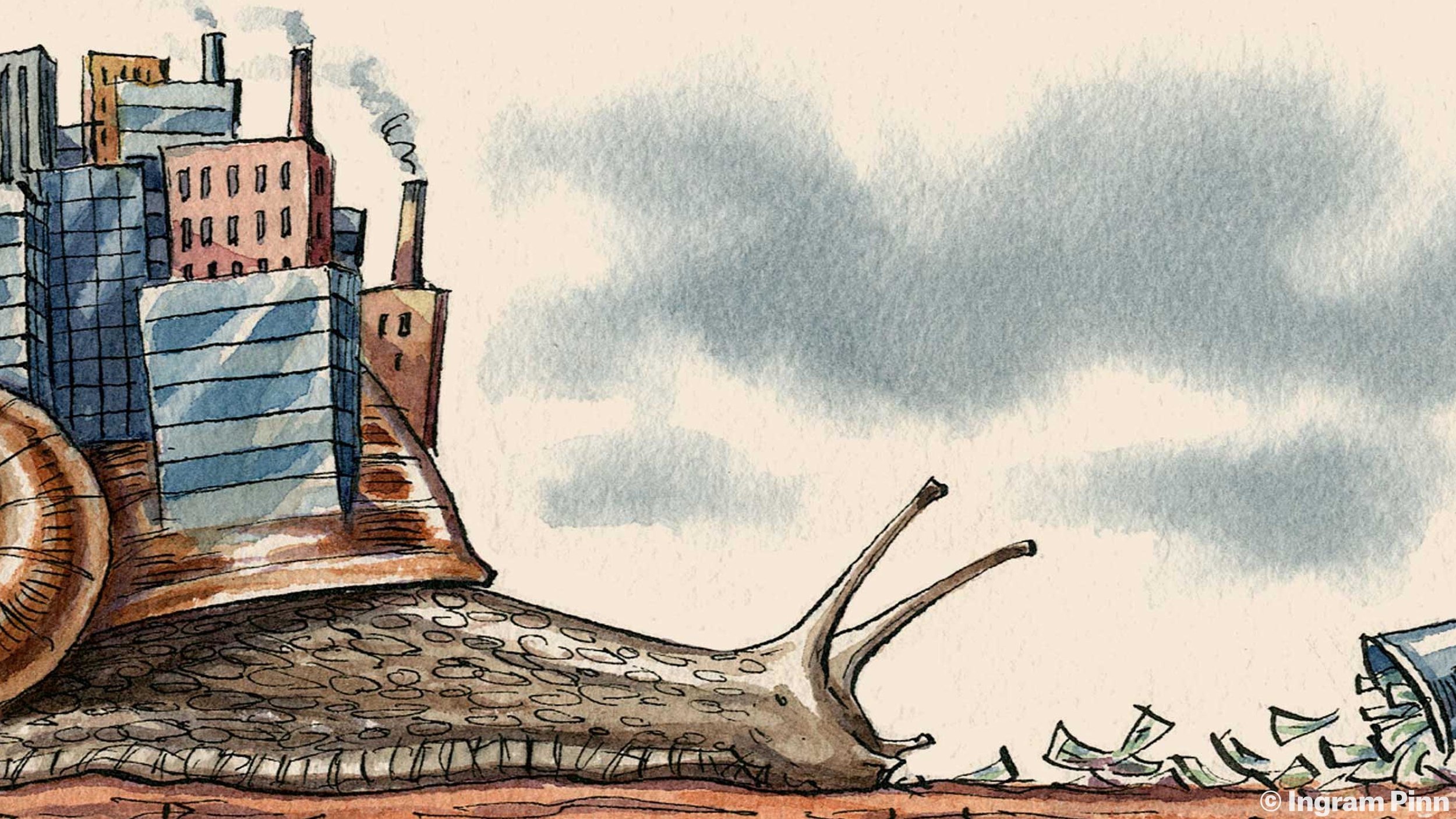The great public sector challenge
Innovate or Stagnate?
As featured on The Mandarin
“Nothing slower than the public service”, and other similar refrains are a prevailing narrative about the ineffectiveness of government. It is a defining characteristic that has shaped the very foundations of multinational industries themselves.
And yet, the reality is far from it.
Sourced from: https://www.ineteconomics.org/perspectives/blog/secular-stagnation-the-limits-of-conventional-wisdom
The public service, whether those in Federal Government, the states and territories, or local councils, run at a rate of knots that outmatch the pace and agility of those geared to deliver to these same public servants.
The rub however is that the public sector writ large is forever placed in the unenviable position of reactivity and reorientation around large, urgent policy agendas in an environment lacking resources, consistency, and the support needed to maintain focus.
The role of highly effective, trusted, supported, and enabled governance is critical.
In this highly complex world, where the demands on public service are stratospheric, how can we ensure rapid and effective delivery? We’re in a time of crises and must position ourselves at the crossroads of a more joined-up creative effort, deeper systemic action, and pace.
This need for acceleration is not just the next buzz word peppered across the passages of reports. It must be an embedded principle of action to achieve systemic change and generate sustainable momentum. Action fuelled by a backbone of imagination that sparks the design of a better, possible, future. It cannot be done without true innovation, co-design, and pace.
The momentum needed to sustain this is not generated in spite of, but rather driven by the people across the country who have taken up the mantle of service to deliver to the public. Whether at the grassroots of councils, the offices of Premiers and Chief Ministers, or in the nation’s capital itself.
And while some corporations may not agree, the push to reduce the reliance on external support and focus on an increased capacity within the public service is undoubtably the right move.
Achieving impact at pace within the context of change surrounding the system of government is the role and task of good governing. And good governing must be driven by government, and bolstered by focused and effective, targeted and connected, external experts that are geared to catalyse the ability to achieve this, rather than replicate capacity and redistribute budgets to offshore shareholders.
World renowned professor of Collective Intelligence, Public Policy, and Social Innovation at University College London, Sir Geoff Mulgan CBE, in his book “Another World is Possible” argues for the need to think differently about the problems we face – and ignite a renewed imagination for bold ideas for transformational change.
It is in this space, true acceleration can be gained through a navigation, understanding and interaction across the leverage points of the system itself.
Economist and author Professor Mariana Mazzucato’s book Mission Economy: A moonshot guide to changing capitalism offers an idealists dream of the ability of governments to drive innovation in service delivery, and how “[we] must create more effective interfaces with innovations across the whole of society; rethink how policies are designed; change how intellectual property regimes are governed; and use R&D to distribute intelligence across academia, government, business and civil society.”
While utopian in its principles as it glosses over the ever-present downward forces of political engineering on the public service, the concept of a mission-led focus and the alignment to a shared goal and objective is fundamental to delivering acceleration.
Mazzucato’s direct engagement across the Australian public sector grounds her work in the reality of high-performance governing and provokes thinking differently about how to achieve vital missions, such as a green industrial policy and delivering net zero by 2050.
Missions are realised through collective ingenuity of diverse minds, relentless drive, and seamless collaboration at every level. We must activate an ecosystem of individuals, industries, expertise, academia, organisations, councils, and governments to orient around specific outcomes, not revenue targets.
As it stands, the challenge to the market is clear. Will we continue to view the public service as a slow-moving target for profit, or will we rise to the occasion and collaborate to produce meaningful change?
In the words of Sir Geoff Mulgan, we need to “reignite social and political imagination.”
Remember:
Public services are capable of rapid innovation and high efficiency but need the support and understanding of the context in which they work to enable it, and the permission to try.
Strategic internal capability building is essential for sustainable improvement in recognition of the vital role the internal workforce has to deliver on the purpose of public service.
Truly collaborative action between public and private sectors drives significant societal advancement, and this means private sector teams working in government to create networks and connections regardless of the logos that adorn LinkedIn profiles.
Often the largest possible impact isn’t through the new, or even the best, but in knowing how to leverage what has already been done within the context of the system.
Whether the mission is a moonshot or a ministerial, it’s time to shed the outdated narrative and embrace a bold, imaginative mindset as a collective force for meaningful change – or be doomed to deserve it.
